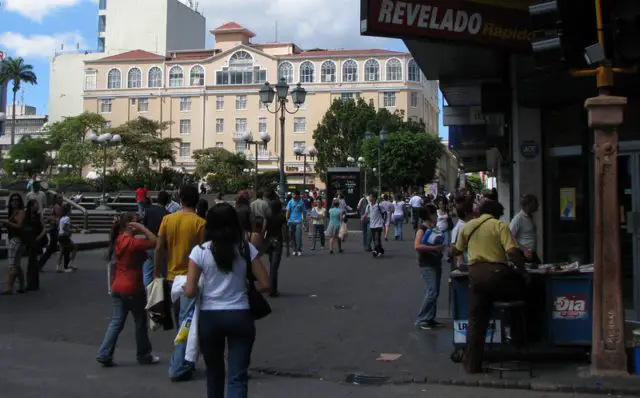In Latin American cities, the role that central plazas had assumed as ceremonial, religious, governmental, and commercial nuclei, but also of and for social interaction, is being transformed by their reconversion into dissected spaces available to the tourist and real estate market. Historical centers such as those of Cartagena de Indias, Cuzco, Valparaíso, Antigua or any of the World Heritage cities in South America are already paradigms of that production of themed environments for tourist exhibition, and to which the local middle class can also go to live or just to walk or shopping.
With everything, we should recognize a reissue of what was colonial urbanism. In fact, in Latin American cities, numerous urban centers are developments of what were the major plazas or weapons characteristic of colonial-missionary planning. They inherit from them the task of expressing and applying the domination of a minority over the majority, materialized in the sumptuousness of government palaces and cathedrals that top such scenes.
There is much in the current urban centers that reissues that mission of control of the urbanism of the conquerors in America: summary of the relations of submission to the hegemonic social castes; administrative and commercial centralization; imposition of an ordered city model… We are, therefore, facing a process of reconquest of urban centers that makes them the nucleus of power and prestige that were at the hands of the colonizers, rescuing them from their appropriation by popular neighborhoods and by pockets of social marginalization.
These processes of recolonization of historical centers can be explicit. San José, in Costa Rica is an example. This case was already studied for a classic work due to Setha Low, on the Central Park and the Plaza de la Cultura in the Cathedral district of the Costa Rican capital, published in 2000 with the title “On the Plaza”.
It came, 10 years later, another study; San José from “Paris in Miniature” to the malaise in the city, from Professor Carmen Araya Jiménez, director of the Center for Anthropological Research of the University of Costa Rica published by EUNED, focused on the “rehabilitating” initiatives aimed at the Urban Area, proscenium, incidentally, of the recent protests against the fiscal reform of the government of Carlos Alvarado.
At the service of the “rescue” of downtown San José for the consumption and settlement of solvent classes, an image of the historic core of the city was created as a sector victim of chaos, little less than uninhabited and usurped by all kinds of undesirable beings of which it was urgent to get rid of. Entrepreneurs, media, advertising agencies, urban planners, politicians…, contributed to the project that imaginarily justified the “clean-up” of Downtown San Jose.

What makes this case remarkable here is how all this propaganda operation adopted the language of Spanish colonization, supporting the process of urban reconversion in the work of a Commission of Regeneration and Repopulation of the San José Center, set up in 2004, and which planned a Plan of Urban Regeneration and Repopulation of the center of San José, in application phase at this moment in the districts of Merced, Hospitals, Cathedral and Carmen.
It is no accident that the term repopulation is used to refer to the gentrification of the center of San José, so frequently used by the Spanish conquerors to allude to the brutal process of subjection-elimination and then supplanting the aboriginal American peoples. The new disposable inhabitants are now, not the Indians, but the popular classes and the marginal sectors that until then had made the Urban Center their territory, of which they were now dispossessed and deported.
An analogy is that of the gentrification processes with the expulsion of the American Indians from their lands, which is not really new. It already occurred to Marco Ferreri and Rafael Azcona for their version of the battle of Little Big Horn in “Touché Pas à la Femme Blanche!” (1974), with Marcelo Mastroniani playing General Custer, Michel Piccoli of Buffalo Bill, and with the female lead of Catherine Deneuve. A western whose scenario was not the Montana landscape, but the colossal sinkhole caused by the reform of Les Halles, one of the most brutal urban devastations that Paris has known in the 20th century.

